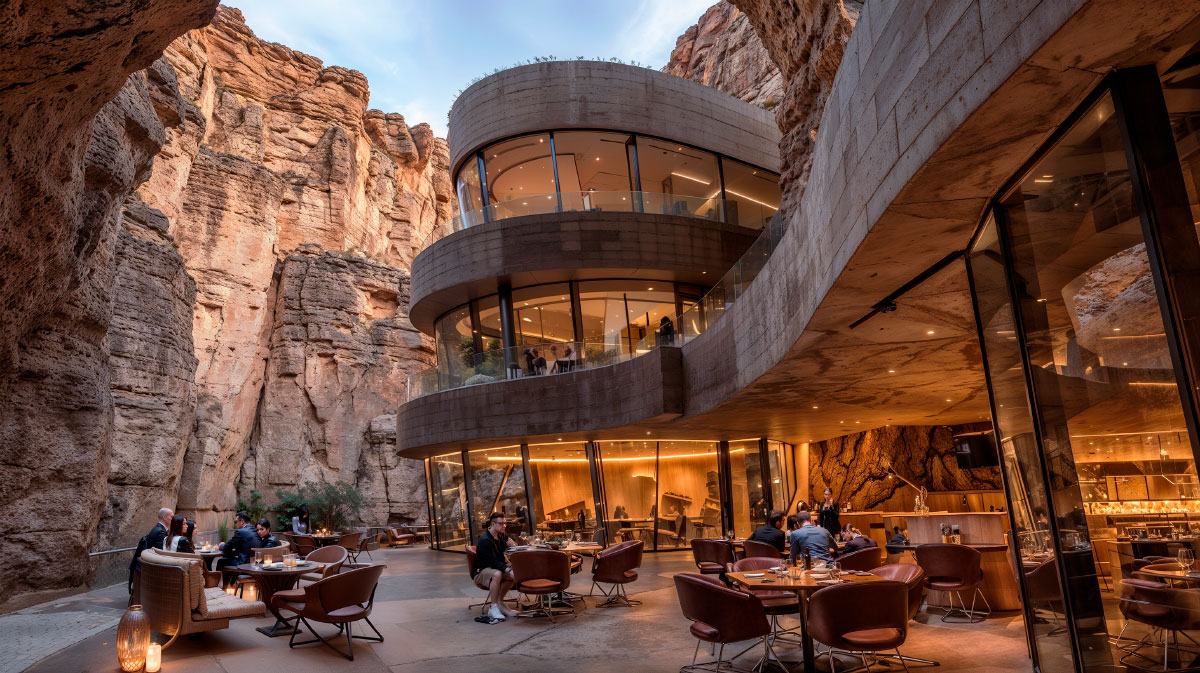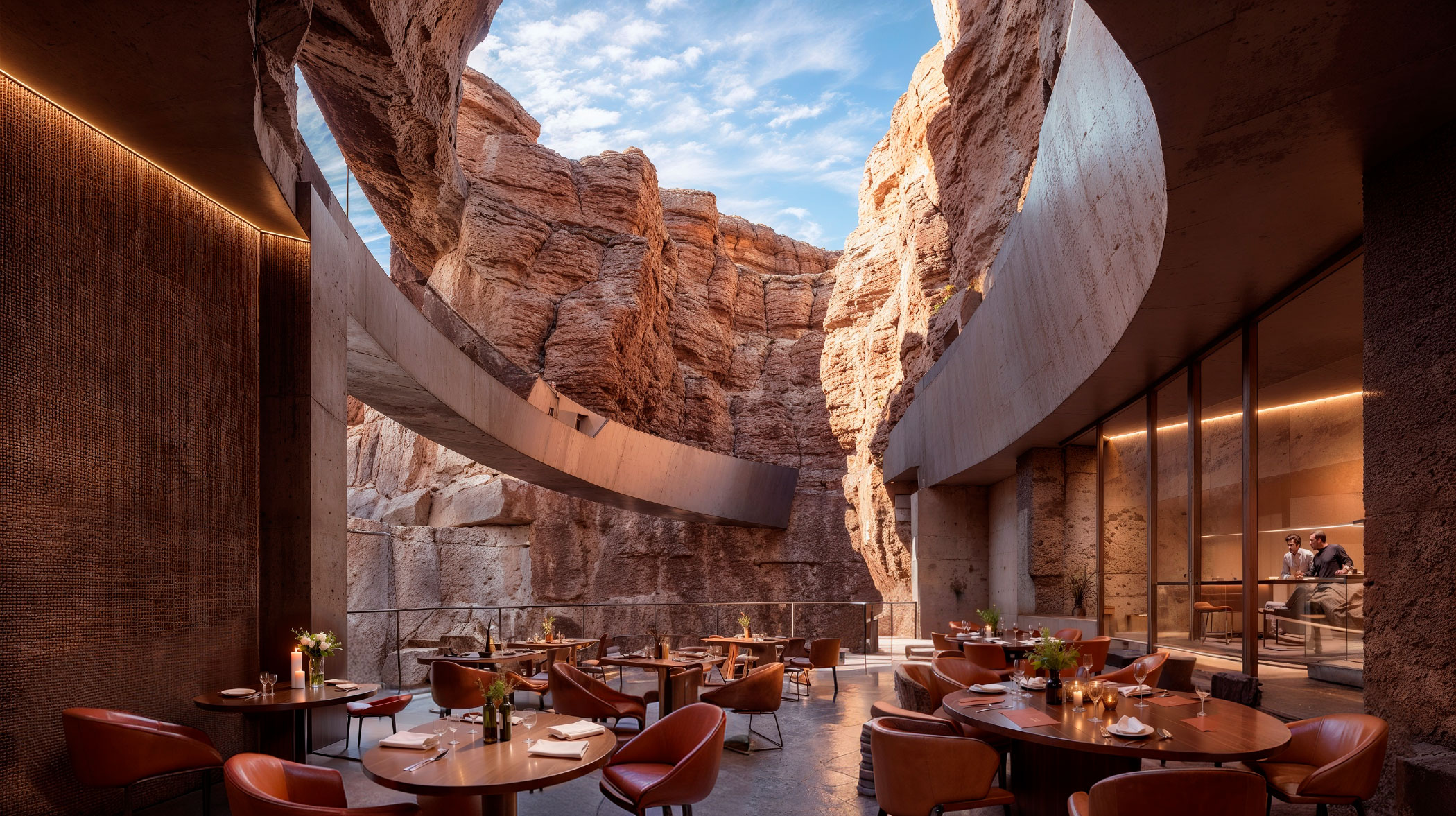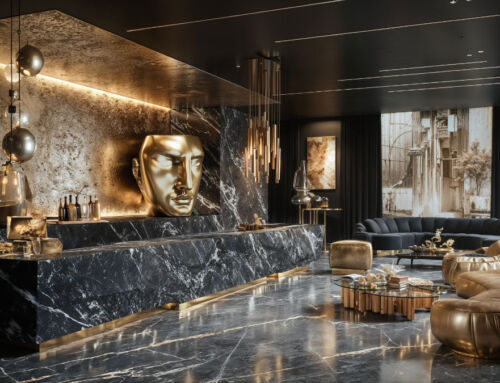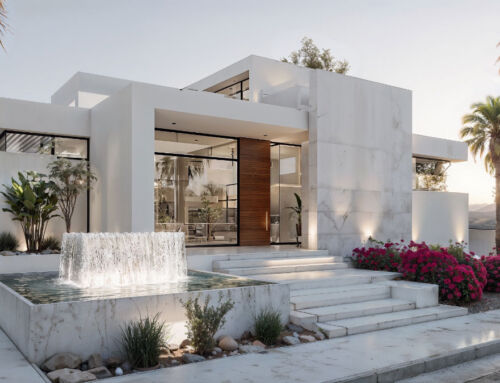Let us imagine, in one of those exercises in leisure-space architecture to which we are accustomed, a panoramic restaurant set like a gem in a rock canyon. Let us imagine three superimposed viewpoints of exposed concrete, linked by a curved ramp that traces a gentle upward path. Let us imagine that they open onto the mountain by means of glazed surfaces, and that the glass runs along their perimeters, blurring the boundaries between inside and outside. Let us imagine that each table in this restaurant enjoys the spectacle of the rock at different heights and at different angles. That is precisely what we have done in the Design Department of Amusement Logic.
On the ground floor, the terrace extends directly onto the natural rock and allows outdoor dining, while the sunset light reverberates on the ochre and reddish walls. On the upper levels, the interior takes on a more intimate atmosphere: toasted wood panelling, tobacco-coloured leather upholstery and warm linear lighting that outlines beams, floors and ceilings, and emphasises the roughness of the surrounding stone.
The furniture replicates the geometry of the building and encourages fluid transit between tables and lounges. The landscaping strategy protects the native vegetation that peeps through the cracks and enhances it with discreet plantings of drought-resistant species. The result is a gastronomic temple whose theatricality lies in its direct dialogue with the landscape: a contemporary refuge that turns the culinary experience into a vertical itinerary through the abrupt beauty of the rock.
By Manuel Devesa, Senior Architect in the Design Department of Amusement Logic







